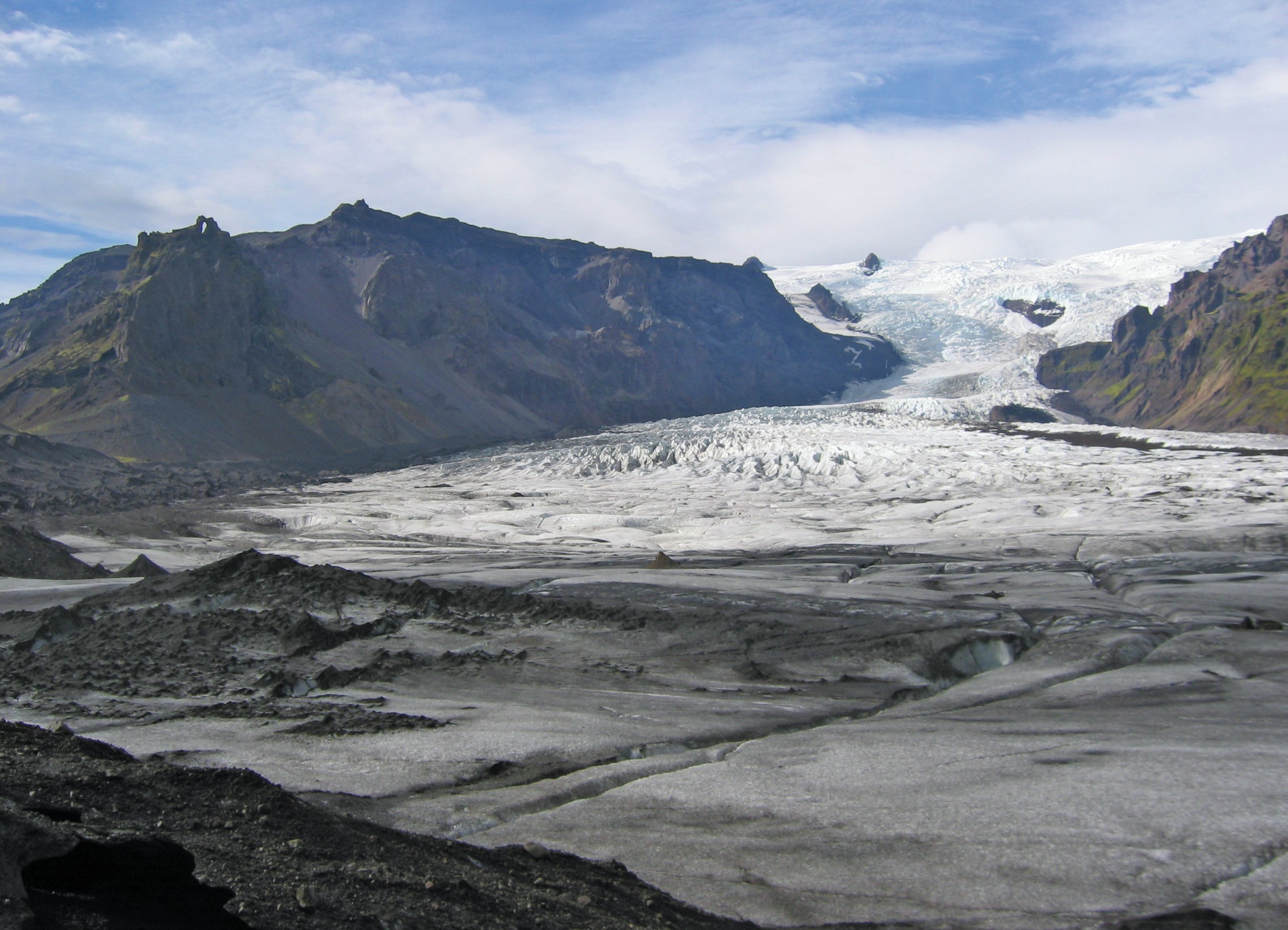
Glacier ice volume, or mass balance, depends on the balance of accumulation and ablation, and varies with changing climate. Since the Little Ice Age at the end of the nineteenth century air temperatures have risen, so ablation rates have increased and glacier mass balance has shown an increasingly negative trend. The melting ice from the retreat of small glaciers, particularly in the Arctic region, is expected to make more contribution to sea-level rise over the next century than melting of the large Greenland and Antarctic ice sheets. This is because glaciers discharge ice into warmer lowlands and often directly into the ocean. Historic climate-change data from meteorological stations can be correlated with glacier fluctuations to predict future ice loss.
Glacier recession has allowed us to study the way landforms are created at glacier margins. As glaciers retreat, moraines are produced by the dumping of debris contained within, below or on the surface of the glacier. Eskers are created by the deposition of debris contained in drainage channels through and under the glacier. The combination and spatial pattern of landforms produced depends on characteristics of the glacier such as its topographical and climatic setting. Glacier forelands can therefore be classified into landsystems indicative of specific glacier dynamics. These can help us to reconstruct the glacial and climatic conditions that must have existed in landscapes that were glaciated in the past.
Your organisation does not have access to this article.
Sign up today to give your students the edge they need to achieve their best grades with subject expertise
Subscribe




